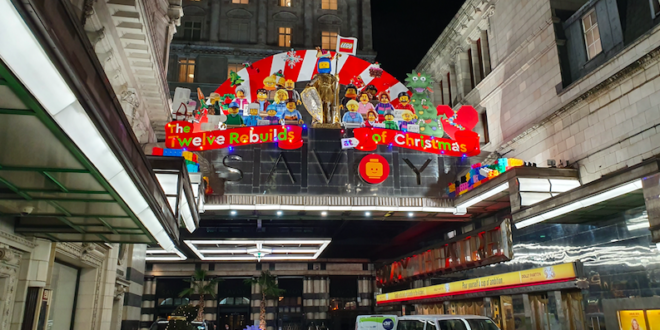It’s the most wonderful time of the year for seasonal experiential activity. Boots is launching its themed Christmas ‘bootiques’, KFC and Deliveroo are pairing up to give out festive burgers to the public, and Lego are rebuilding the 12 days of Christmas in the Savoy (below).
It’s clear that brands are making the most of experiential during the holiday season to get their products on consumers’ wish lists. But what are the fundamental ingredients required for a successful seasonal experiential campaign?
High footfall locations offer a false promise
Experiences curated by brands are an incredibly effective method of driving brand and product reappraisal; however, they are infamously difficult to measure.
At this critical time of the year for driving sales, brands are more eager than ever to impress consumers. As a result, they are looking for their experiential initiatives to ensure a guaranteed return on investment.
Brands can be misguidedly lured by high-footfall times and locations because they think that the more people their brand can come into contact with, the more value the activation will deliver. And the result is brands heading en masse for rush hour at Waterloo, or Piccadilly at Christmas.
Yes, you may reach more people at populous locations, but how many people are actually paying attention? Moreover, how many meaningful interactions are you building with consumers? Smaller, and in some cases more niche locations, can often deliver a better return on investment.
Understanding the Christmas mindset
The spirit of the Christmas shopper is quite different to any other time of the year, and brands need to cater for this shift in mindset. Don’t forget too, for every excited shopper full of seasonal cheer, there’s another who is overwhelmed by the crowds and the pressure to buy the perfect gift. Brands need to be aware of these dynamics and develop their activities accordingly.
Brands have an opportunity to bring genuine value (and hell, maybe even some joy and magic) to the festive shopping experience by curating and delivering experiences that offer a welcome respite from the hustle and bustle, or those (like the Lego 12 days of Christmas activation) that can help entertain families, and leave lasting memories that boost brand awareness.
One other thing that is often overlooked is the ‘treat yourself’ approach, which many people exhibit during the festive season. With recent research having revealed that more and more shoppers are picking up high quality items for themselves during their Christmas shopping trips, it’s clear that there is a very real opportunity for luxury brands to entice the ‘treat yourself’ shoppers into their stores through experiential activations.
And why multi-sensory will always outperform low engagement sampling campaigns
At this time of year, when people are actively looking for respite and entertainment during their shopping visits, brands need to make sure that they’re bringing something special to their campaigns.
We’ve seen that multi-sensory campaigns are often the most effective at leaving a lasting imprint on consumers – experiences which stimulate all the senses are still something of a novelty, and are thus more likely to stay with consumers long after they leave the site of the activation. Experiences that awake our sense of smell, hearing, touch and sight will draw us into the moment, engaging us in ways that narrower stimulation just can’t and enhancing the overall memorability of the campaign
For instance, we recently worked with Green & Black’s to amplify the launch of its new range of luxury, bite-sized chocolates, ‘Velvet Fruit.’ We invited consumers across the country to taste the smooth and fruity dark chocolates from the comfort of a velvet tasting chair, whilst they received a chocolatier-inspired experience.
The creation of this optimum tasting environment was informed by our neuromarketing approach, which helped us identify that the most effective way to drive trial and awareness of the product was through a sensory sampling experience. The campaign helped to drive purchase intent and encouraged consumers to opt for Velvet Fruit when choosing their evening ‘me-time’ treat.
It proves that going the extra mile will deliver a greater return on investment. Ultimately, if you can’t do experiential marketing right, then save your money and don’t do it at all.













